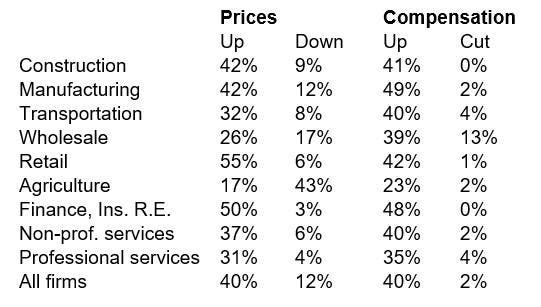The age-old debate over which comes first, wages or prices, continues to be a hot topic in economic circles. As businesses struggle to cope with rising costs and workers demand higher wages, the issue of how these two factors are interconnected is more important than ever. Some argue that higher wages drive up prices, while others believe that rising prices are the result of inflation and other economic factors beyond the control of businesses.
One school of thought is that increasing wages directly lead to higher prices for goods and services. When businesses pay employees more, they must pass on these costs to consumers in the form of higher prices. This wage-price spiral can create a cycle where workers demand higher wages to keep up with rising prices, leading to even higher costs for businesses and ultimately for consumers. In this scenario, wages are seen as the driving force behind inflation and businesses are caught in a catch-22 situation of trying to balance the needs of their workforce with the demands of their customers.
On the other hand, some economists argue that prices are not solely determined by wages, but are influenced by a myriad of factors including supply and demand, production costs, and market conditions. Inflation, for example, can cause prices to rise independently of any increase in wages. This can be seen in situations where prices rise due to a shortage of supply, such as during a natural disaster or other catastrophic event. In these cases, businesses may be forced to raise prices even if they are not paying higher wages to their employees.
However, the relationship between wages and prices is not always straightforward. Some businesses may choose to absorb the cost of higher wages by cutting into their profit margins rather than passing on the costs to consumers. This can lead to decreased profitability and could potentially result in layoffs or other cost-cutting measures down the line. On the other hand, businesses that do raise prices to cover higher wage costs may risk losing customers if they become too expensive compared to their competitors. Finding the right balance between wages and prices is a delicate dance that requires careful consideration of both economic and social factors.
In the end, the chicken-and-egg debate over wages and prices may not have a clear-cut answer. Both factors play a role in shaping the economy and influencing consumer behavior. As businesses continue to grapple with rising costs and workers push for higher wages, finding a solution that benefits both parties is essential for sustainable economic growth. Whether it’s the chicken or the egg that comes first, one thing is certain: the interconnectedness of wages and prices will continue to be a critical issue in the years to come.













